
Later I lived at 95 Tallwood Court in Atherton (where Joe Montana, Willie Mays, and Barry Bonds among others live).
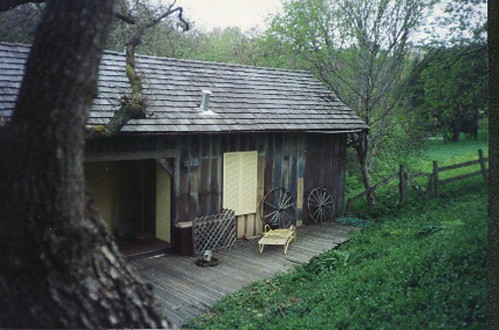
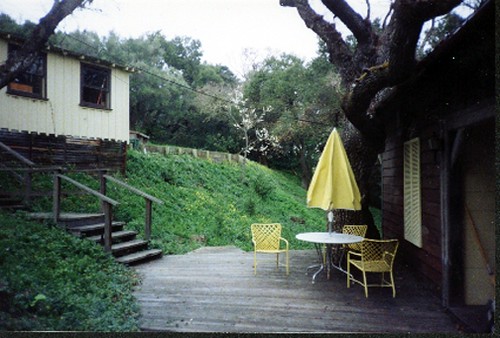
Finally I lived at 51 Adam Way (also another pool house/studio in Atherton, but nearer the El Camino).

In 1996, I was offered a tenure-track position as an Assistant Professor of English at Mississippi State University and moved to Starkville, MS, where I still live.
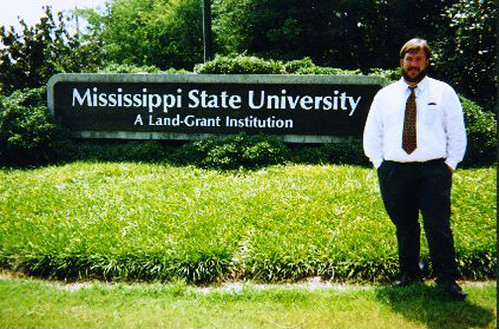
Public Enemy, It Takes A Nation of Millions to Hold Us Back
I always said this was the best Hip Hop album ever! Much better than Fear of a Black Planet, which was more highly rated back in the day, maybe because of its Spike Lee connections. Still recently some revisionism seems to be going on. To me ITANOMTHUB WAS AND ALWAYS WILL BE the sound of urban New York, and mean that literally. This one of the greatest Noise records ever made, with samples so sophisticated and complexly layered nobody ahs ever touched them. major props to Harry Shocklee & the Bomb Squad for their production "in full effect". I can listen to "Night of the Living Baseheads" and "bring the Noise" on almost continual loops. As much as I loved Run D.M.C., this is the BOMB!
The Mekons, Original Sin/The Mekons Rock 'n' Roll
This Leeds-based punk collective has now successfully melded three of my favorite musical styles: pure English punk, American roots/alt.country, and straight ahead indie guitar rock. I heard these both in early 1989. The former is really a reissue of the Mekon's epochal 1985 Sin records release Fear and Whiskey plus extra contemporaneous B-sides and ep tracks. One of the greatest records ever made and a testament to how good alt.country can be, although they wouldn't call it that. I wrote about both these records in an essay that can be found here along with the essay that lays out my thoughts about MBV's Loveless (see below). Rock 'N' Roll was the Mekons' big major label debut on A&M, then a label known for more MOR fare like Billy Joel. It should have been their Nevermidn moment but alas it wasn't. Still The Mekons are one of those few bands that when they choose to play out immediately vie for the label best rock band on the planet (with The Ex, Fugazi, and the final version of GBV). You won't go wrong buying either of these discs as the reissues they now are.
Here's a taste of what I have to say about the Mekons:
From the album’s opening quartet, “I was out late the other night / Fear and whiskey kept me going / I swore somebody held me tight / But now there's just no way of knowing,” in a song ironically titled “Chivalry,” we have entered a world of fear and whiskey, of darkness and doubt, a place where it is hard to be human. A central thematic of much of the Mekon’s oeuvre is darkness/ doubt,/desperation, and they do seem to have a quarrel with a pop culture history that does not garner them a larger audience in the US; however, I think Greil Marcus overstates the case for bitter sentimentality (1993, 300–1). I’d position their desire in the same way Walter Benjamin was “to brush history against the grain” (257), as a response to the apparent barbarity of civilization where a man dies “While the witless upper classes attended the boat race” (“Hey! Susan,” Original Sin).
Another reason the sentimentality argument does not wash is the very rootedness of this disc in all kinds of collectivity: the original T J Clarke/Guy Debord Situationist International-inspired Leeds Art School collective as punk rock; the contemporary connection with the great Dutch kollektiv and punk band, The Ex; the multi-various collective instrumentation, which resembles nothing so much as a cross between a shambolic Celtic folk band and a traditional jug band. On one famous occasion, a one-off gig at the late, lamented Kennel Club in San Francisco during the F.U.N. 90/Curse of the Mekons era (January 7, 1991), the band gained and shed members almost every song and seemed like they were going to play all night long. I stopped counting the number of “encores.” There is, of course, a less artistic, more political angle to collectivity as well. It is the way of the miners and other unionized British labor; it is the way of hardscrabble miners in Appalachia, too. It’s also the only real way for noncommercial combine farming to survive. And it is at the intersection of those two related but distinct cultures (farming and mining) that the truest marriage of punk and alt.country exists.
My Bloody Valentine, Loveless
I've written at length about this album elsewhere as well as a shortish piece on its first track. Here's some of what I had to say about it:
My Bloody Valentine’s (MBV) aural adventure Loveless cannot be fully comprehended without a nod towards other noisy arts/construction movements of the 1970s and ‘80s (like NY’s no-wave scene and SF’s Survival Research Labs built objects, industrial arts wargames spectacles). Furthermore, it is an extension of the band’s own earlier reworking/feedbacking of classic Spector production effects and Wilsonesque lyrics in such tracks as Isn’t Anything’s ‘Feed Me with Your Kiss,’ where a hint of a melody wafts behind a veritable wall of guitar effects. But Loveless also suggests links to older musical traditions appear as well. Simon Reynolds and Joy Press ‘trace a thread that runs through Indonesian gamelan, Aboriginal didgeridoo music, Indian raga, Tibetan devotional music … John Cage … My Bloody Valentine, right up to ambient techno artists like the Aphex Twin’ (p. 181). This tradition ‘shares a belief that minimal-is-maximal’ (182). Shields himself specifically notes the liberating influence of ‘techno and rap’ which allow for new versions of sound structures and production mixes (Story).
Loveless also presents its own postmodern takes on the work of art in the age of digital reproduction and on the indeterminacy of meaning, mining a musical vein of Benjamin adumbrated with reception theory. MBV works in dual threads of noise and minimalism. Singer/Guitarist Kevin Shields states, ‘A lot of what we are is about sound. We use volume as an instrument a lot live’ (Interview), and he further elaborates a desire to decenter the vocalist in the mix and focus on the instruments producing the trademark ‘muffled sound … like fluff on a needle’ as opposed to the typically ‘bright’ radio friendly sound of most pop, a music which ‘you have to look into as opposed to it comes out to you’ (Story). Iconically, the album is represented not unlike the previously mentioned video montage by a barely discernible and definitely disembodied shot of a guitar’s fretboard seemingly about to dissolve from the wild vibrations of the strings.
Ironically, what does come out to you from Loveless is the sheer power and volume of the music. Rachel Felder confirms this fact:Ever since its Isn’t Anything LP was released, the band’s live shows have been as much about hyperbolically loud volume as about the music itself. That volume heightens their music’s intensity as well as adding to the painful disorientation of it …. The audience’s experience at a Valentine’s show recalls what Roland Barthes wrote in his essay “Musica Practica,” where he discusses the intensity of musical connection you get from playing an instrument yourself. (p. 29)The noise is arrived at by some technical wizardry, as Simon Reynolds and Joy Press explain: ‘On Loveless, they go beyond the ethereality of “glide guitar” into full-blown alchemy (sampling their own feedback and playing it on a keyboard, so that there’s even less sense that what you hear was generated by physical acts and fleshly creatures)’ (pp. 220–1). The soundcheck for the February 2, 1992, San Francisco Loveless tour debut at Slim’s was a testament to the independence of electronics, as the sequencer kept going off at the wrong time and with the wrong item. Frontman/producer Kevin Shields noted that the sequencer is ‘less reliable than a human being; it’s a stupid thing that doesn’t have any sense. Quite often it decides not to work.’ The band continued with the sequencer because they ‘didn’t want to use tape; when we play live, we want to be able to change things.’
Guided by Voices, Alien Lanes
I've never been one to be a band groupie, but I have seen GBV live more often than any other band except for Mission of Burma, Marcus Roberts, and some local Starkville stalwarts. I was first introduced to the band through their mainstream breakout album, 1995's Alien Lanes. Here was a sound I could wrap my ears around and a seemingly endless stream of breaathtaking pop gems, plus lots of little "recorder grot" entre song action to borrow a Stephen Malkmus phrase. I don't think they ever bettered the lo-fi aesthetic and its sequencing as evidenced here, but I do think they made better records, notbaly the next one, Under the Bushes, Under the Stars. Still, here's where my "obsession" started.
The Drive-By Truckers, Decoration Day
No longer my pick for their best album, that honor goes to 2004's The Dirty South, but this weas the album that really clicked for me in a way the high concept Southern Rock Opera didn't. It's probably better to say this is the first DBT album I was willing to just let run in the CD player, whereas with SRO several tunes would get shaved off either disc. Patterson Hood and his mates are both raised in the souther tradition and painfully aware of its shortcomings and blindspots. This album also sees the development of a third vocalist and songwriter, Jason Isbold—who pens the title track amongst others, joining Hood and Mike Cooley in sharing those honors.
My favorite song on the album is probably "Your Daddy Hates Me." here's a bit of a forthcoming Perfect Moments in Pop essay:
Patterson Hood notes that this song is "about divorce and the emotional fallout that follows." It's also about the odd Freudian psychic arrangements that tie fathers to daughters and intermarried families to each other while often tearing them apart. And it's about the bifurcated nature of Southern manhood: Father's sons but Mama's boys: "And I always loved your Daddy, I loved your Mama even more." But mostly, at least to me, it's about the variety of beautiful rackets the electrical guitar can be manipulated into making.
To get this Perfect Moment in Pop, you gotta let the song flow for a while as the three guitarists trade leisurely and self-restrained licks. And then it happens for the first time at about the 3:53 mark. Egged on by former Sugar bassist and current studio guru David Barbe, they let loose one of what Jason Isbell calls Barbe's encyclopedic "cool old sounds." Specifically Mike Cooley smears a high-pitched riff which ducks in and out of the mix over and under the other two guitars and ratchets up the song's underlying tension. Barbe himself enters the fray around the 5:58 mark with what Patterson Hood calls a "moaning sound," a more eloquent phrase than the liner notes' bland "additional guitar." What "Your Daddy Hates Me" is is the definitive southern take on three guitars (not so) gently weeping.
"TURN IT UP!"
My original review of the entire album can be found here. Additional highlight tracks include "Hell No, I Ain't Happy," "Marry Me," "(Something's Got To) Give Pretty Soon" and "Outfit" with the classic lyric: "Don't worry about losing your accent / a Southern man tells better jokes."
That's all for now folks re: The Records That Changed My Life. Maybe we'll do it again in a decade.
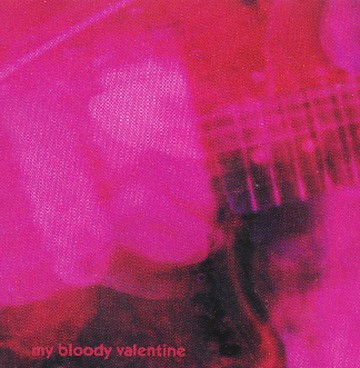
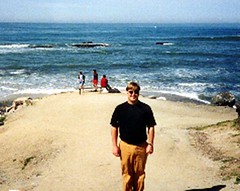
No comments:
Post a Comment